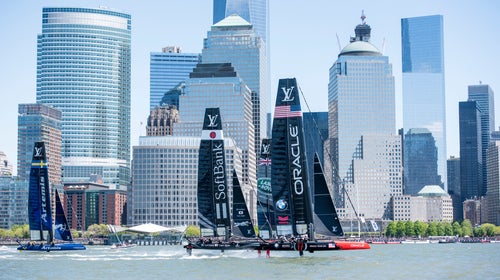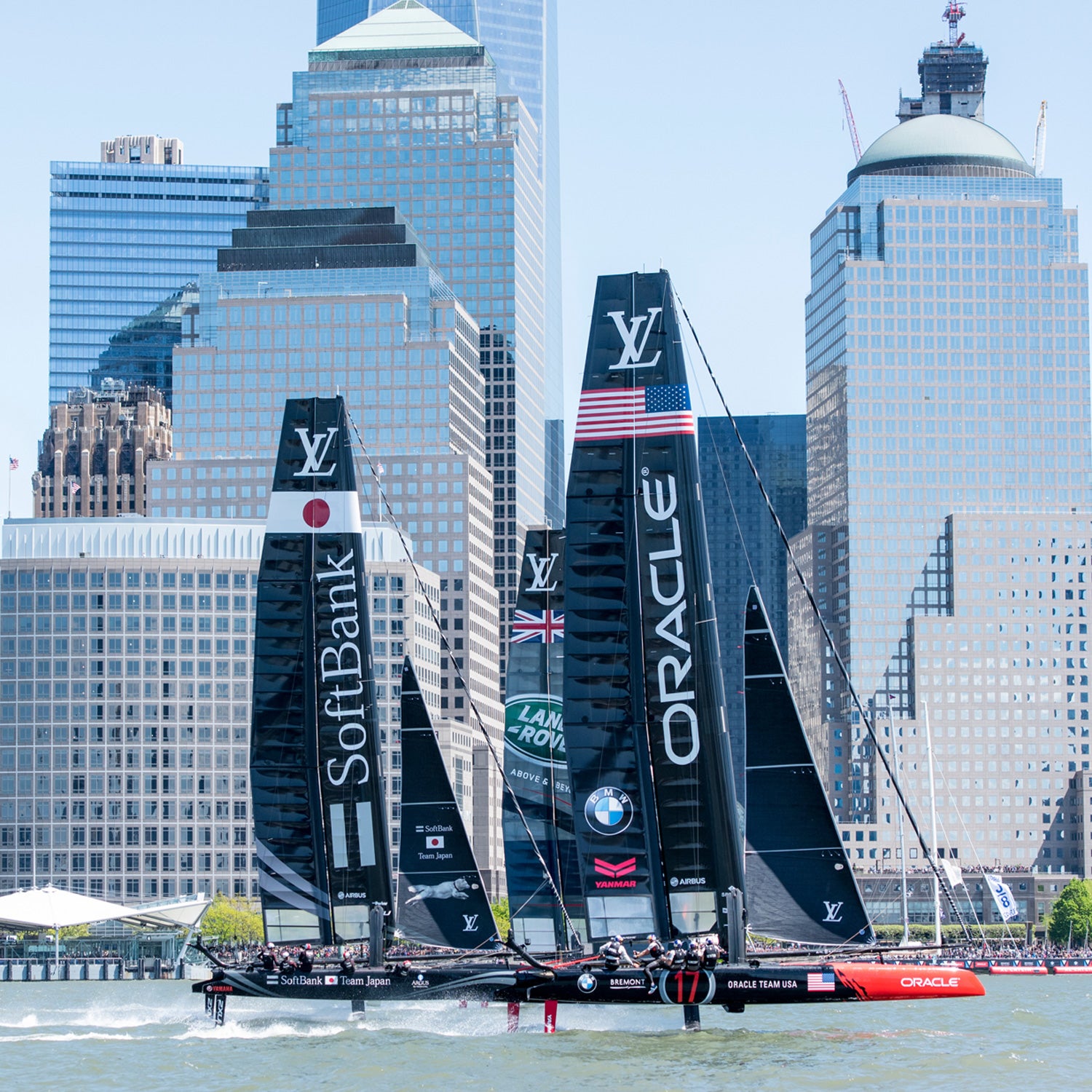Think of the America’s Cup as the Indy 500 on water. Yes, it’s a boat race, but calling these things “boats” is like calling a choo-choo train. These are some of most advanced racing vessels on earth, capable of speeds in excess of 55 miles per hour. In fact, thanks to the technology that lifts the boats above the surface of the water (more on that later), they can actually travel faster than the wind. With another race in the lead-up series happening , and the main event set for next summer in Bermuda, now is the perfect time to get up to speed. Here’s what you need to know about the technology used to compete in the greatest show on two hulls.
I’m Guessing It’s Expensive to Race?
In a word: Yes. The boats alone cost between $8 million to $10 million, and most teams have a backup just in case. However, the boats are only part of the story, because you also have to take into account the entry fee ($3 million), the staff (Oracle Team USA had 130 people in 2013), the cost of shipping all that sailing equipment around the world, plus costs of maintenance, operations, and incidentals. It has been estimated that mounting a successful America’s Cup campaign costs over $100 million. Larry Ellison may have spent $250 million to $300 million defending the title in 2013.
That said, organizers are attempting to reduce costs. For 2017, competitors will race a smaller class of boat called the AC45, which is 45 feet long, rather than the AC62, which is 62 feet long. (Boat size had been previously reduced in 2013 from 72 feet to 62 feet.) Typically, smaller boats can be developed faster, require smaller crews, and cost less to transport.
How Do They Get the Boats from Race to Race?
At one point you had to sail your competition boat to the race, but today’s vessels just aren’t made for that kind of mileage. Teams typically disassemble them, package them up, and ship them on larger boats or planes to the tune of hundreds of thousands of dollars in transport and insurance fees.
How High-Tech Are These Boats?
Each team designs and develops its own boat and tries to keep the proprietary technology secret from other teams (despite the best efforts at spying when competitors are practicing on open water). What we do know is that everyone will be racing a twin-hulled catamaran that uses a hydrofoil to lift itself out of the water at speed. Of course, there are hundreds of nerdy boat rules that teams have to follow, but specifics around materials and drag-reducing technologies to provide an edge are kept under wraps. Various teams partner with aerospace companies like Red Bull Advanced Technologies, Airbus, and Cosworth to develop the technology.
What Makes the Boats Unique?
For starters, the hulls are made of honeycombed aluminum (so they’re light as can be) and the fixed-wing sail is made of Kevlar and carbon fiber instead of a flappy fabric sheet. But the biggest difference is in how they move. Where a traditional boat muscles through water or skips across the surface, an America’s Cup boat barely even touches it. This is made possible by L-shaped hydrofoils or “daggerboards” that lift the hull completely out of the water at speed. Since the introduction of hydrofoil technologies, race speeds have literally doubled.
What Other Technologies Do the Teams Use?
In 2013, the name of the game was live performance data. According to Forbes, Team Oracle USA’s winning boat had over 300 sensors analyzing 3000 variables ten times per second—things like mast strain and sail effectiveness. Meanwhile, video feeds monitored every detail and course adjustment. This boat collected 200 gigabytes of data per day. Just imagine how far these kinds of data collection methods have advanced in the four years since the last America’s Cup. (To put things in perspective: during the last event you were likely rocking an iPhone 4 or 4S, maybe the 5 if you were an early adopter.)


